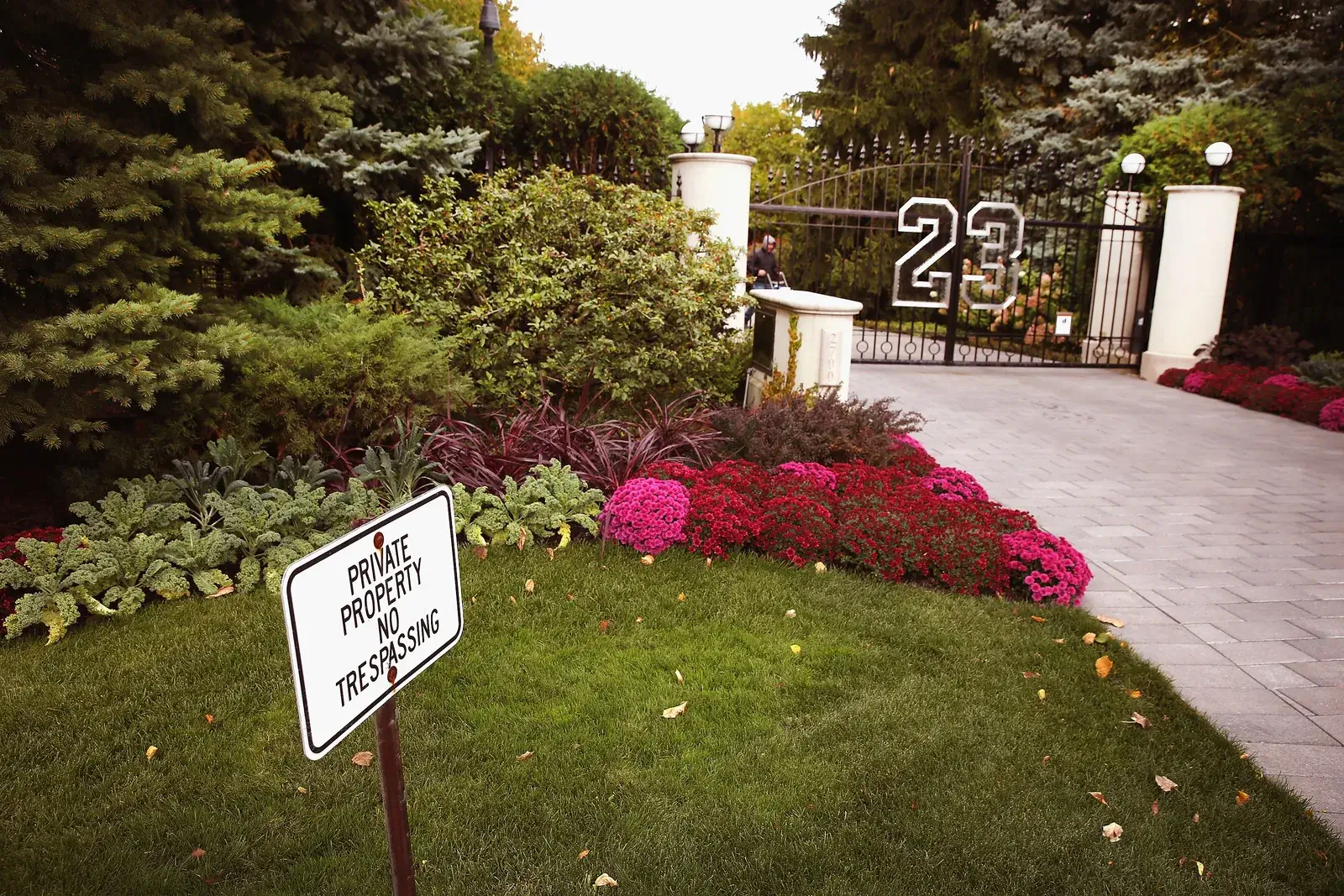Architectural Digest
Michael Jordan’s Chicagoland Manse Lands a Buyer After 12 Years on the Market


Michael Jordan has reportedly found a buyer for his massive Chicago area estate. The NBA icon’s suburban mega-mansion went under contract on Sunday after 12-and-a-half years on the market, according to Crain’s Chicago Business.
The Chicago Bulls legend first listed his 56,000-square-foot residence, which was completed in 1994, for $29 million in 2012. Located about 25 miles north of the city in Highland Park, the home has seen several different price slashes over the years to entice buyers. In 2015, it dropped to its most recent asking price of $14.855 million. (In true Jordan style, those digits add up to 23.) While the final sale price won’t be determined “for the next 20 or 30 days,” per Crain’s, it’s a long-awaited conclusion to the beleaguered property’s selling saga.
Read on to understand why Jordan’s journey to offloading the colossal property was not exactly a slam dunk.
Why was Michael Jordan’s house struggling to sell?
The home is a de facto Chicago area landmark, with scores of visitors descending upon the property to take photos outside the gate emblazoned with Jordan’s retired jersey number, “23.” But clearly having a fanbase doesn’t mean serious buyers were at the ready when Jordan, with his kids grown and other residences across Florida, Utah, and North Carolina in his portfolio, decided to part ways with it. A recent feature in the Wall Street Journal explored the home’s struggle to sell—with some wondering if maybe the unique abode was simply too “Jordanesque.”

Custom features of the home
The baller was the shot-caller in the making of this house, and some might argue that such specifically MJ-themed design made it challenging to court a buyer. Filled with custom details, the nine-bed, 19-bath (15 full, four half) compound welcomes guests with an iron gate adorned with the number 23. Jordan’s “Jumpman” silhouette Nike logo can be seen on flags along the outdoor putting green. The manse also hosts a locker room, a trophy room, and a full-size basketball court painted with the names of Jordan and his children, Marcus, Jeffrey, and Jasmine. There’s also the cigar and poker room (Jordan is known for his love of playing cards), equipped with a humidor and poker tables, and another space complete with doors from the original Playboy Mansion in Chicago.
While the details are interesting, many questioned why Jordan and the estate’s realtor decided against depersonalizing the home before trying to sell it. But the listing agent on the property, Compass’s Katherine Malkin, said those features were actually among the major selling points of the space. “We haven’t really talked about that because it’s part of the draw. We don’t look at that as being a hindrance,” Malkin told the WSJ of the custom qualities.
The property might have been marketed and sold as something other than a private residence—with potential second lives like a Michael Jordan museum, a conference center, an after-school program base, or condos—but limited parking and neighborhood zoning dramatically hindered what it could be made into. Plus, the majority of people who are willing to drop such a sum on a home in the area are eager for closer proximity to Lake Michigan, which is two miles away, Malkin explained.
Another obstacle contributing to the home’s slow sale? High property taxes, which come out to about $148,000 annually.
Why was Michael Jordan’s home the focus of a TikTok controversy?
Jordan’s property was embroiled in a bit of a TikTok controversy recently when a video surfaced purporting to show flooding inside the mansion, which appeared abandoned and dilapidated. An “urban explorer” known as Decaying Midwest posted the clip to the popular app. The video, which shows a flooded indoor basketball court with a Bulls logo and a kitchen in the middle of a renovation, is no longer on the Decaying Midwest page, though several tabloids and news outlets ran with it.
However, rumors that the derelict mansion in the video was Jordan’s have since been debunked. A lawyer for Jordan reportedly reached out to the account, and a subsequent followup post clarifying that the property in the video was not Jordan’s Highland Park home put an end to any rumors.
If you’re upset about missing your chance to tour the property in its 12 years of searching for a buyer, know that it would’ve been a challenging endeavor anyway. Qualified potential buyers who toured the house had to sign a nondisclosure agreement. And, at least for now, you can still browse the listing—which only has a few photos—but pays proper homage to its famous soon-to-be-former owner: Every TV pictured displays Jordan in the frame.
